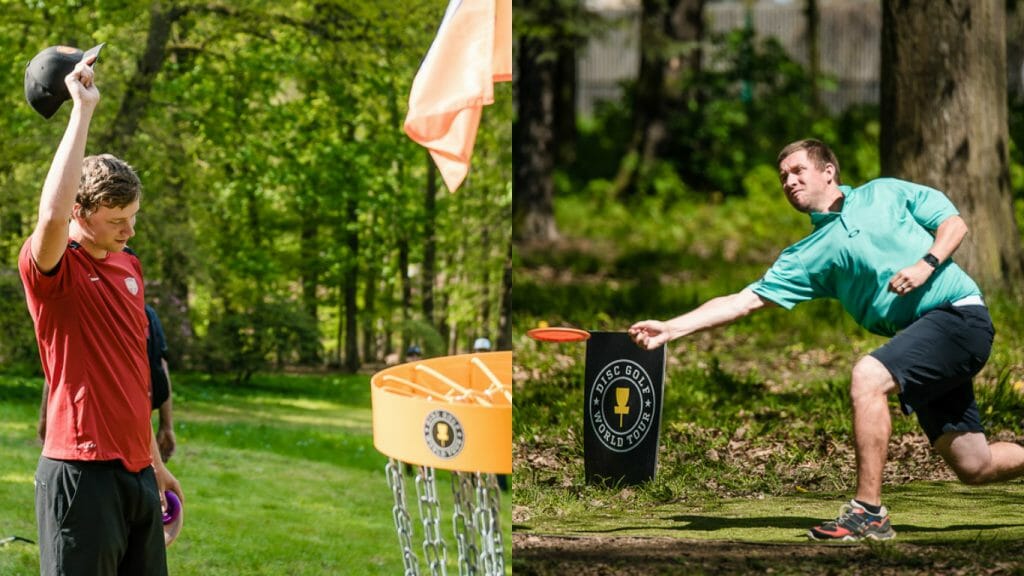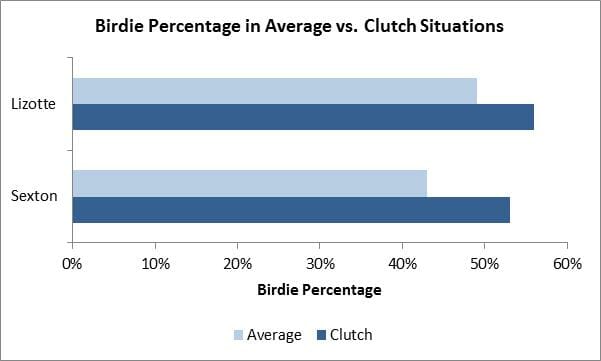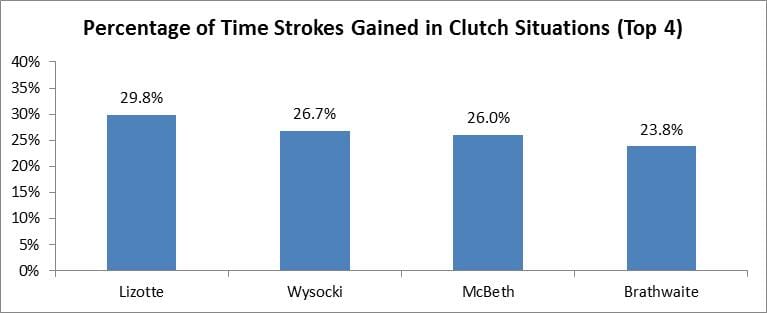Who comes through in crunch time and who buckles under the pressure? It's not as simple as that.
July 1, 2016 by John Klimp in Analysis with 0 comments

Editor’s Note: All data is presented for tournaments where Hole-by-Hole scoring is available
Nearly every Monday on ESPN during football season you can watch talking heads debate if one team won a game or the other team blew it. Did Cam Newton choke, or did the Denver defense overpower him? Trying to decipher if a team or player has been “clutch” is a classic sports commentary platitude, and we’re lucky this year to have so many close tournaments that we can start really having that argument in disc golf. Hole to hole we can never really say if one player choked or one player was clutch, but over the course of a season we can start to see which players perform the best under pressure.
The topic of clutch hitting in baseball has been explored at length and is believed to be a myth by many statisticians. Players can go on streaks of coming through at the right moment, but over the course of their careers they tend to hit the same in all situations. This gets tricky in disc golf, though, where it’s easy to say Ricky Wysocki or Paul McBeth choked and Simon Lizotte was clutch, but it’s important to remember that in disc golf you can only choke if you’ve already been playing great golf. Anyone on a baseball team can come up to bat during a game-winning situation, but a disc golfer can only fall out of the lead if he or she were in the lead to begin with. Take a look, for example, at the number of times in the final round of a tournament a player has been in the Top-3 and dropped a stroke to the field.
| Player | Dropped Strokes |
|---|---|
| Paul McBeth | 23 |
| Ricky Wysocki | 12 |
| Simon Lizotte | 11 |
| Jeremy Koling | 10 |
| Nate Doss | 7 |
By this standard, McBeth has “choked” in the final round nearly twice as many times as any other player since 2015. Obviously this is because McBeth is in the lead more than any other player on tour, but I point this out to emphasize that looking at individual moments where a player falls out of the lead isn’t a great way to decide how strong a player’s mental game is; Players like McBeth and Wysocki have an opportunity to “choke” almost every weekend. In fact, there is a relatively strong correlation between a player’s rating and how many times they have “choked” (correlation coefficient of 0.78). For perspective, so far in the 2016 MLB regular season, the correlation coefficient between a team’s batting average and its win percentage is 0.37 (closer to 1 to indicates a stronger relationship).
Measuring Clutch
There are a number of ways you can determine how clutch a player is. One method is to review how players play in clutch situations compared to their average play. An alternate method is to calculate the percentage of times a player gains a stroke on the leader when in clutch situations.
For the purposes of this initial attempt to analyze clutch play, a clutch situation is considered any time a player is within three strokes of the lead (or in the lead by three or fewer strokes) in the final round of a tournament. The chart below shows the difference in birdie percentage between players in average situations and clutch situations in 2015 and 2016. Nate Sexton and Simon Lizotte are the only two players on tour right now to show a significant improvement against their normal play in clutch situations. These players are also both benefiting from great play in 2016 allowing them to throw in more clutch situations.

The next chart shows the percentage of the time a player has extended his lead or gained a stroke on the leader when in clutch situations. This doesn’t allow a comparison to the player’s typical performance, but for many people it will be the result that matters most, not past performance. Lizotte again tops the list, gaining a stroke on the leader nearly 30% of the time.

Over the long run we should expect very few, if any, players to truly demonstrate “clutch” play, but it’s fascinating to look at periods of time and see how players are handling increased pressure in tournaments. This will be of particular interest when Lizotte and Sexton hit the course together at the European Masters later this month.
Please leave feedback below and on Facebook on how you would measure clutch play. As stats for the sport develop and the Disc Golf Pro Tour continues to roll out its new statistics, we’ll be able to look even more in depth at these situations.